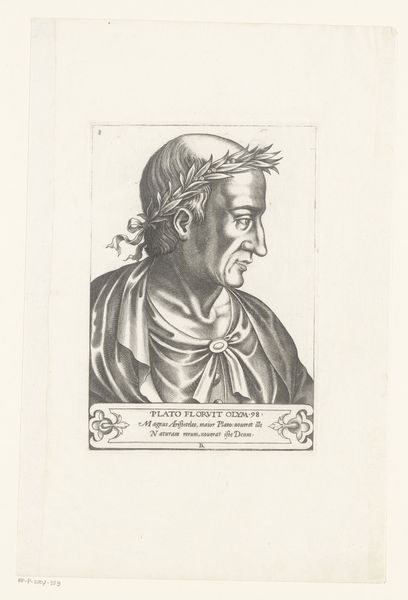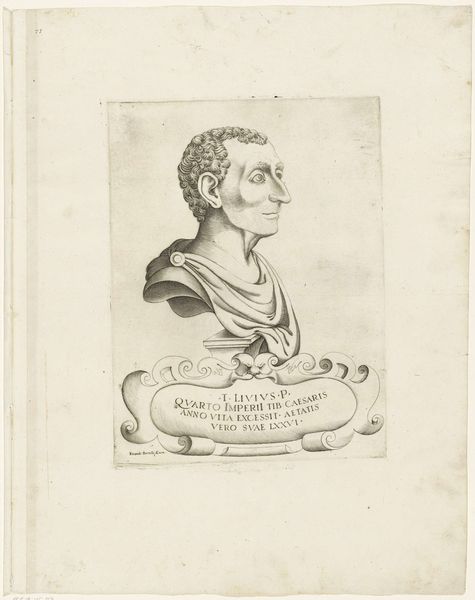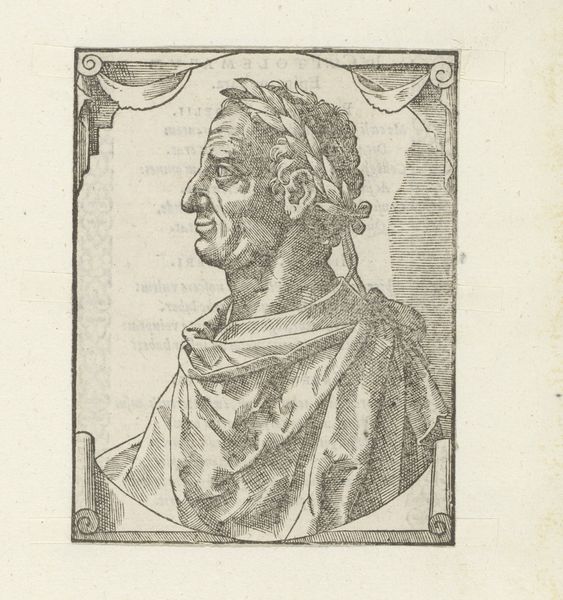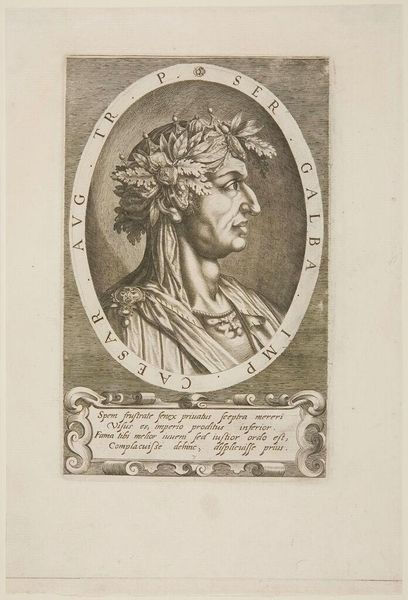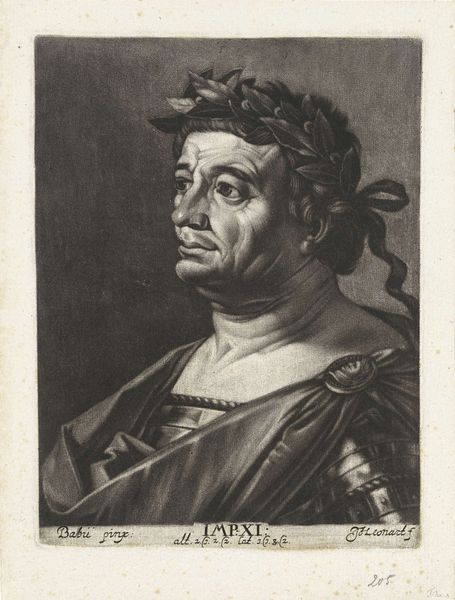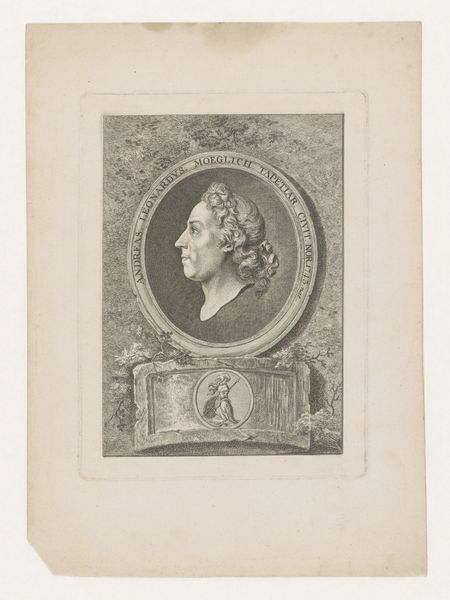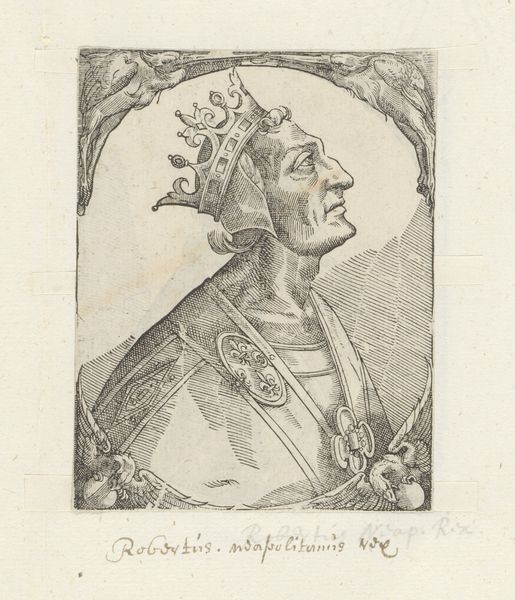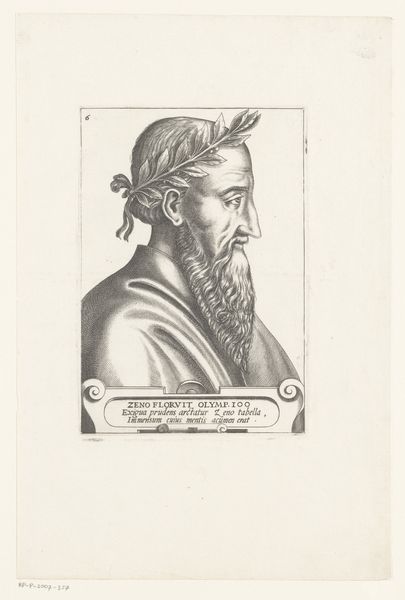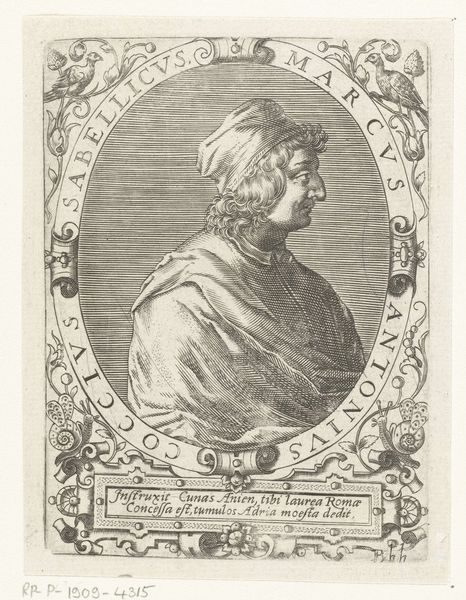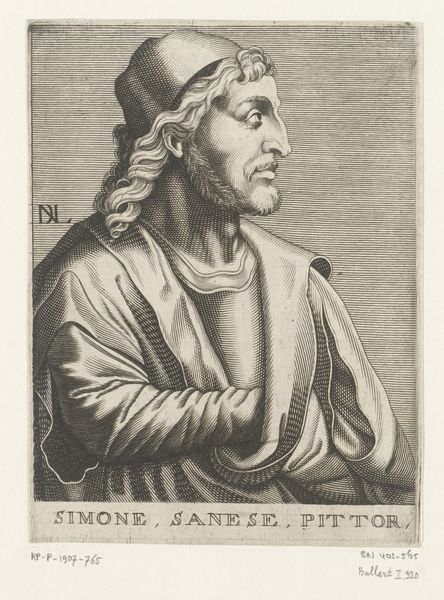
print, engraving
#
portrait
#
allegory
# print
#
old engraving style
#
mannerism
#
figuration
#
line
#
history-painting
#
engraving
Dimensions: height 175 mm, width 121 mm
Copyright: Rijks Museum: Open Domain
Editor: This is Renè Boyvin's 1566 engraving, "Portrait of Sappho," currently housed in the Rijksmuseum. The crisp lines create a rather somber mood. What do you see in this piece from a formal perspective? Curator: Immediately, the contrast between the sharply defined face and the softer drapery grabs my attention. The lines are deliberately constructed to direct the viewer's gaze. Observe how Boyvin uses hatching and cross-hatching to create volume and shadow. It’s a sophisticated play of light and dark, wouldn't you agree? Editor: Yes, I see that, particularly around the eyes and the folds of the fabric. What’s the significance of that laurel wreath, do you think? Curator: Note how the wreath isn’t just decorative; it acts as a formal element to frame the face. It contributes to a visual harmony, echoing the circular form of the brooch at the subject's chest. It balances the composition. Consider how this calculated arrangement informs our understanding of the subject. Editor: So, it's less about the symbolism of the laurel and more about its structural role in the engraving itself? Curator: Precisely! While symbolic meanings might be layered onto the work, our focus remains on the artistic choices within the picture plane, how line, form, and composition contribute to the work's intrinsic qualities and our appreciation of its form. Editor: That's fascinating; I never considered focusing on form over symbolism so directly. It definitely shifts how I see the piece. Thanks for your perspective.
Comments
No comments
Be the first to comment and join the conversation on the ultimate creative platform.
